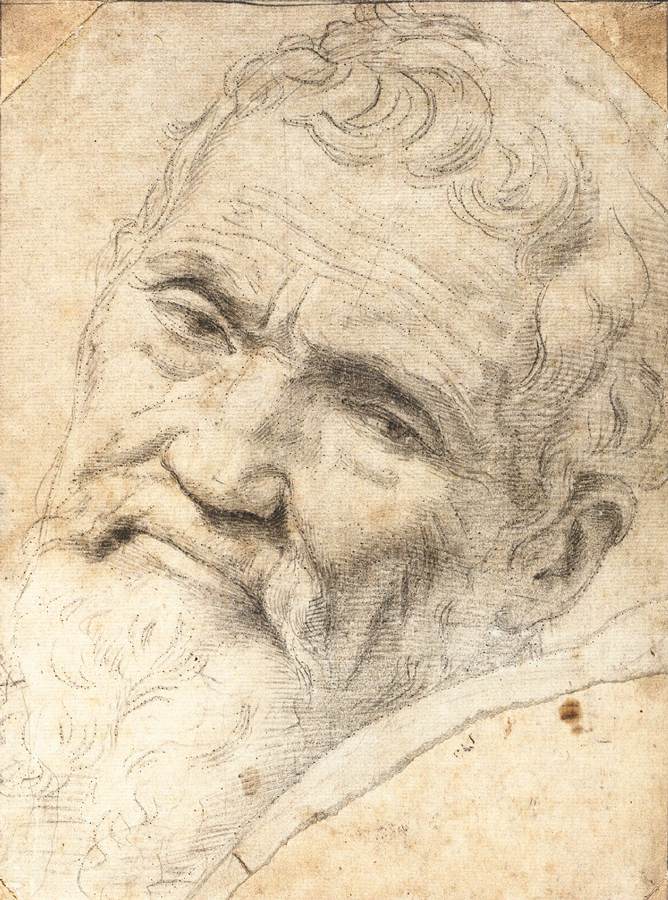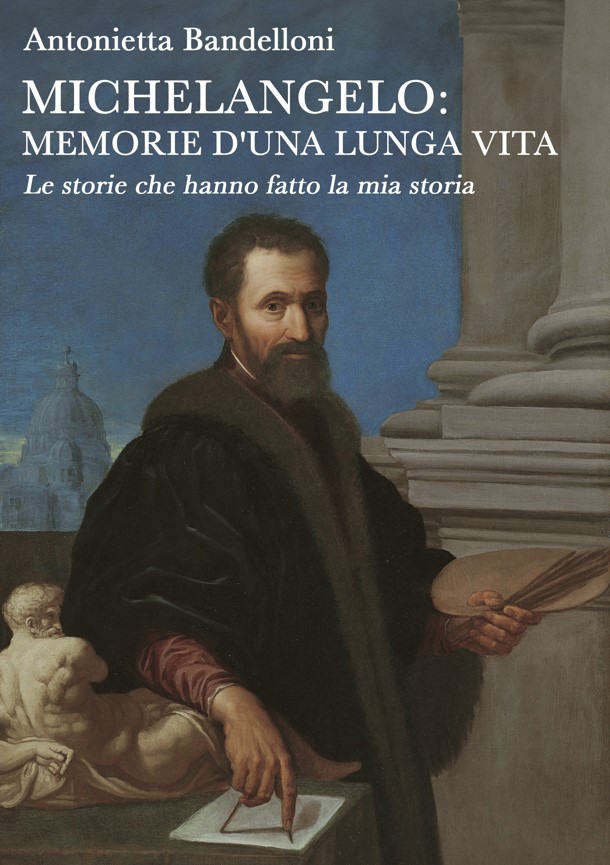La Scultura del giorno: Abele morente di Dupré e la sua incredibile storia
La scultura del giorno che vi propongo oggi è Abele morente dello scultore senese Giovanni Dupré, oggi custodito presso l’Hermitage Museum di San Pietroburgo.
La prima volta che Dupré presentò il modello gesso dell’opera all’Accademia fiorentina nel 1842, a 25 anni, suscitò una grande scia di polemiche. Mentre l’opera fu grandemente lodata da Lorenzo Bartolini e Luigi Pampaloni, iI naturalismo con cui era stato modellato il corpo nudo del giovane Adamo scandalizzò non poco i benpensanti ma non solo.
Bartolini, secondo quanto annotato nei propri scritti da Dupré dichiarò che “la prova più convincente della bontà del suo metodo era appunto l’Abele, la quale statua era fatta da un giovane che non sapeva nulla né di Fidia, né di Alcamene, né di altri, che non aveva respirato l’aria afosa dell’Accademia, e che affidatosi alla bella natura l’aveva copiata con fedeltà e amore”.
Gli artisti Pampaloni e Giuseppe Sabatelli avevano avuto modo di vedere Dupré modellare la creta prima del gesso e resero testimonianza pubblica dell’originalità dell’opera.
Non bastò comunque.
Ci fu chi, nonostante tutto, non credette che lo scultore giovane e autodidatta fosse in grado di dar forma a un corpo così ben modellato e alcuni critici lo accusarono di aver realizzato l’opera facendo un calco dal vero su un corpo reale.
Quelle accuse così dolorose da ricevere per Dupré, spinsero l’artista a fare pubblicamente un confronto fra le misure del gesso realizzato con quelle del ragazzo che aveva posato per lui: Tonino Liverani detto Tria.
Dupré realizzò la trasposizione in marmo di Abele Morente nel 1844 per lo Zar Nicola I Romanov.
Il Granduca di Toscana Leopoldo II avrebbe voluto arricchire le sue collezioni con una replica in marmo del capolavoro di Dupré ma dalla Russia fu negato il permesso di fare una copia scolpita. Così il Granduca commissionò all’artista una versione in bronzo che lui riuscì a realizzare con la collaborazione del Clemente Papi, all’epoca insignito del titolo di Real Fonditore.
Realizzare l’opera in bronzo non fu una cosa semplice. Lo stesso Dupré, nel libro “Pensieri sull’arte e ricordi autobiografici” racconta: “Avendogli ordinato [il Granduca Leopoldo II] la fusione in bronzo dell’Abele, ed avendo egli compiuti tutti i lavori preliminari per quella fusione, fu aperta la valvola, perché discendesse nella sottoposta forma.[ ] Il metallo scorreva giù dalla cannella al canale conduttore alla forma liquido e chiaro; la gioia era dipinta su tutte quelle affannate persone, che tanto avean faticato attorno a quell’opera. Il Papi dritto e raggiante stava per abbracciare i suoi alunni presenti, quando alcune fiammelle violette nella bocca della fornace annunziarono il raffreddamento del metallo, che gradualmente allentava la sua caduta. Lo stupore e l’abbattimento si dipinse su tutti i visi. Il metallo non correva più, colava a bioccoli come una polenta; s’accagliò, si fermò; la statua era poco più che a metà fusa; tutto era perduto”.
Quella prima fusione fu disastrosa. Nel 1849 ne fu realizzata una seconda che andò a buon fine.
La versione in bronzo dell’Abele Morente è custodito presso la Galleria di Arte Moderna di Palazzo Pitti, a Firenze.
Per il momento il vostro Michelangelo Buonarroti vi saluta dandovi appuntamento ai prossimi post e sui social.
Sculpture of the day: Dupré’s dying Abel and his incredible story
The sculpture of the day that I propose to you today is the Dying Abel by the Sienese sculptor Giovanni Dupré, now kept at the Hermitage Museum in St. Petersburg.
The first time Dupré presented the plaster model of the work to the Florentine Academy in 1842, at the age of 25, it aroused a great deal of controversy. While the work was greatly praised by Lorenzo Bartolini and Luigi Pampaloni, the naturalism with which the naked body of the young Adam was modeled scandalized not only the right-thinking but not only.
Bartolini, as noted in his writings by Dupré, declared that “the most convincing proof of the goodness of his method was precisely Abel, which statue was made by a young man who knew nothing about Phidias, nor Alcamene, nor others, who had not breathed the sultry air of the Academy, and who, having entrusted himself to beautiful nature, had copied it with fidelity and love”.
The artists Pampaloni and Giuseppe Sabatelli had had the opportunity to see Dupré modeling the clay before the plaster and gave public testimony to the originality of the work.
It wasn’t enough anyway.
There were those who, despite everything, did not believe that the young and self-taught sculptor was capable of giving shape to such a well-modelled body and some critics accused him of having created the work by making a live cast on a real body.
Those accusations, so painful for Dupré to receive, pushed the artist to publicly compare the measurements of the plaster made with those of the boy who had posed for him: Tonino Liverani known as Tria.
Dupré created the marble transposition of Dying Abel in 1844 for Tsar Nicholas I Romanov.
The Grand Duke of Tuscany Leopold II wanted to enrich his collections with a marble replica of Dupré’s masterpiece but Russia denied permission to make a sculpted copy. So the Grand Duke commissioned the artist a bronze version which he managed to create with the collaboration of Clemente Papi, at the time awarded the title of Royal Foundryman.
Creating the work in bronze was not a simple thing. Dupré himself, in the book “Thoughts on art and autobiographical memories” says: “Having ordered him [Grand Duke Leopold II] to cast the Abel in bronze, and having completed all the preliminary work for that casting, the valve was opened , so that it descended into the underlying form.[ ] The metal flowed down from the pipe to the conductive channel to the liquid and clear form; joy was evident in all those anxious people who had worked so hard on that work. The upright and radiant Papi was about to embrace his students present, when some violet flames in the mouth of the furnace announced the cooling of the metal, which gradually eased his fall. Amazement and dejection were painted on all faces. The metal no longer ran, it dripped in lumps like polenta; he crouched down, stopped; the statue was little more than half-cast; everything was lost.”
That first merger was disastrous. In 1849 a second one was built which was successful.
The bronze version of the Dying Abel is kept in the Gallery of Modern Art of Palazzo Pitti, in Florence.
For the moment, your Michelangelo Buonarroti greets you and will meet you in future posts and on social media.

Sostienici – Support Us
Se questo blog ti piace e ti appassiona, puoi aiutarci a farlo crescere sempre più sostenendoci in modo concreto condividendo i post, seguendo le pagine social e con un contributo che ci aiuta ad andare avanti con il nostro lavoro di divulgazione. . ENGLISH: If you like and are passionate about this blog, you can help us make it grow more and more by supporting us in a concrete way by sharing posts, following social pages and with a contribution that helps us to move forward with our dissemination work.
8,00 €
-
Notte dei Musei: Visite Gratuite e a un euro
🇮🇹Torna la notte dei Musei. Sabato 18 maggio in molte città d’Italia e d’Europa i musei apriranno le porte ai visitatori fino a notte inoltrata ad accesso libero o al prezzo simbolico di un euro… 🇬🇧The Night of the Museums is back. On Saturday 18 May in many cities in Italy and Europe the museums…
-
Dieci domande all’artista Fabio Cuffari: Pittura e Disegno Contemporaneo dall’Inquietudine al Sacro
🇮🇹Torno a parlarvi di artisti contemporanei capaci di risvegliare i sensi più sopiti e di emozionare con le loro opere: Fabio Cuffari. Navigando in rete, mi son trovato dinanzi agli occhi il disegno di una Pietà angosciosa che riesce a penetrare fin sotto pelle per non andarsene più… 🇬🇧I return to talk to you about…
-
Il Dipinto del giorno: la Madonna della Seggiola di Raffaello e quella cornice non più originale
🇮🇹Il dipinto del giorno che vi propongo oggi, in occasione della Festa della Mamma, è la Madonna della Seggiola di Raffaello… 🇬🇧The painting of the day that I propose to you today, on the occasion of Mother’s Day, is the Madonna della Seggiola by Raphael…
















per quanto la bronzea possa piacere la versione in marmo è spettacolare
"Mi piace"Piace a 1 persona
anch’io la preferisco di gran lunga
"Mi piace"Piace a 1 persona
…che poi non ho mai capito cosa muoveva i bacchettoni moralisti …c’è più morbosità nei loro giudizi che scandalo nell’opera. Ma è sempre stato così e ancora si conserva in parte quella mentalità distorta
"Mi piace"Piace a 1 persona
già. La cosa che fece scalpore, oltre al nudo, è il fatto che uno scultore autodidatta potesse realizzare un corpo così perfetto
"Mi piace"Piace a 1 persona
l’invidia rode chi la prova
"Mi piace"Piace a 1 persona
eh si
"Mi piace""Mi piace"